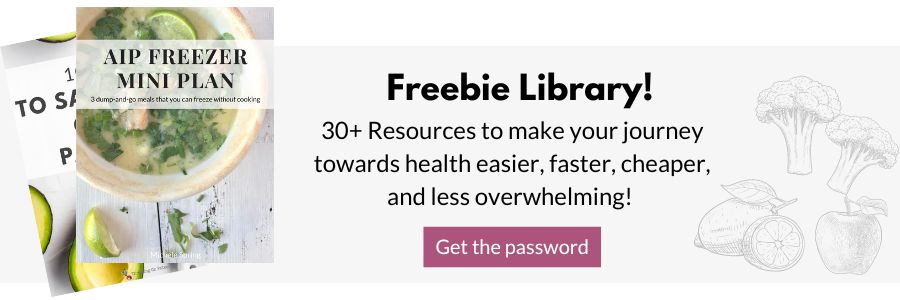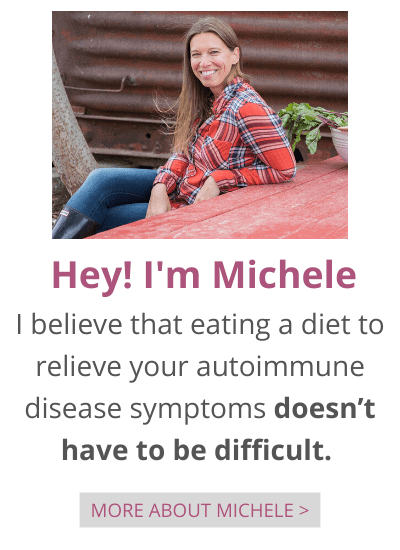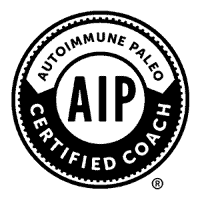This post may contain affiliate links. Please read my disclosure policy.
What is AIP? Why would you do this Autoimmune Paleo Protocol? I answer these questions and more in this post and video.
If you have an autoimmune disease you may wonder if you're stuck in a life of miserable symptoms – or with pharmaceutical drugs that might alleviate some of your symptoms but create even more negative side effects.
Luckily, for a great majority of us who suffer from autoimmune disease, certain diet and lifestyle changes can help us heal to a point that we can get our full lives back.
I'm not saying this will work for everyone, and sometimes you might have an underlying issue that will make healing more difficult, but from my experience and years of blogging and talking to hundreds upon thousands of people who have tried the AIP diet, it works.
So you now might be wondering, what exactly IS this AIP diet?
See also: The Ultimate Guide to the AIP Diet – Everything you need to know to be successful with the Autoimmune Protocol
What is AIP?
AIP stands for the Autoimmune Paleo Protocol, and the specific “rules” have been laid out by Dr. Sarah Ballentyne, a researcher who has dedicated her life to how food affects those of us with autoimmune disease. (She also runs the popular blog, The Paleo Mom).
You can watch this video which explains a lot of it – plus shows what I ate for Day 1 of AIP, or skip ahead where I detail it as well.
In a nutshell, AIP is a diet and lifestyle change that removes the foods and behaviors that are inflammatory and cause immune system activation. When your immune system is always ramped up and on the attack AND you have autoimmune disease, this means your body is constantly creating autoantibodies that are attacking your tissue. Whether that's your thyroid in the case of Hashimoto's or Graves, your skin in something like psoriasis, your joints in Rheumatoid Arthritis, or your intestines like in Chron's, Colitis, IBS, or Celiac disease, it's not a good thing.
Additionally, most (if not all) people with active autoimmune disease have something called a leaky gut (increased intestinal permeability). This diet aims to heal that so that way food particles no longer make their way into our bloodstream for our immune system to attack. There are several diets out there that claim to help with healing a leaky gut, however, most of them don't necessarily help those with autoimmune disease because of the inclusion of those immune-activating foods.
What foods can't you have on AIP?
AIP removes these foods:
- the normal Paleo removals: no grains, legumes, refined sugars, refined oils, processed oils, or dairy
- nuts
- seeds
- seed-based spices (like cumin, mustard, nutmeg, etc)
- eggs
- coffee
- alcohol
- chocolate & cocoa powder
- nightshades (eggplant, tomatoes, chili peppers, white potatoes, etc)
- nightshade-based spices (chili powder, paprika, black pepper, etc)
- all dairy including ghee
See the entire AIP Food List
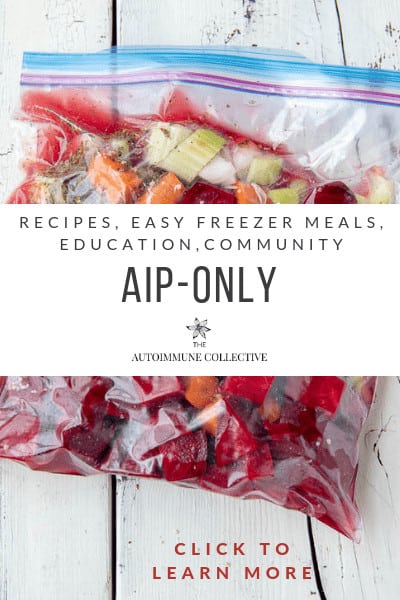
How long do you stay on AIP?
Most people typically stay on this strict version of the diet for 30-90 days – or until most of their symptoms have gone away and most of the disease activity has subsided.
Then you start adding foods back one at a time according to a stage-based schedule.
You ideally wait 72 hours or longer before adding another food to see if you have any symptoms from that food.
Typical symptoms include (but aren't limited to): gas, bloating, rashes, nausea, vomiting, mood changes (like depression, irritability, aggression), dizziness, inability to concentrate/brain fog, etc.
Getting any of these symptoms after eating something indicates that you shouldn't add that food back to your regular diet at the moment.
However, this doesn't mean it's out of your diet FOREVER. As your gut heals you might find that you can tolerate the food again.
I personally couldn't eat paprika for 10 months after doing AIP in 2014 because every time I did I'd get depressed. So I'd continue to leave it out of my diet and try again every six weeks.
Eventually, I was able to eat it without any negative symptoms and then add it back to my diet.
Some people need a bit more time on the full elimination phase and possibly some troubleshooting with other issues like SIBO (small intestinal bacterial overgrowth), other infections (like H. Pylori or yeast), or parasites that may be preventing healing. It's best to work with a qualified practitioner if this is this case.
Don't Eat Gluten – EVER!!
Certain foods though, like gluten, should be removed from your diet FOREVER if you have an autoimmune disease though. This is even if you don't have Celiac disease or any sort of non-Celiac gluten sensitivity. EVERYONE WITH AUTOIMMUNE DISEASE.
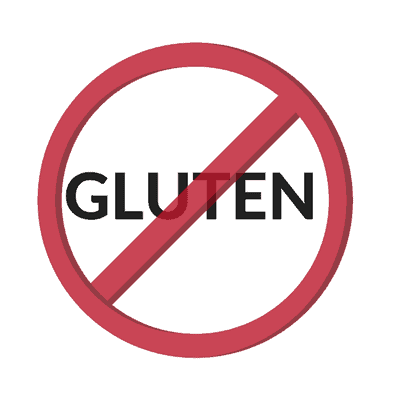
Sorry to be the bearer of bad news 🙂
There are just SO many ways that the proteins in gluten punch holes in our guts and ramp up the immune system. It happens to everyone, but a healthy person might be able to tolerate this happening without any symptoms. Those of us with autoimmune disease? We aren't as lucky. It really wreaks havoc on us and all those symptoms you don't want to keep having? They'll continue to be there.
And the kicker that really should make you want to change your diet and lifestyle AND stay of gluten forever is that once you have one autoimmune disease, you are a lot more likely to get more autoimmune diseases. Especially if you already have more than one.
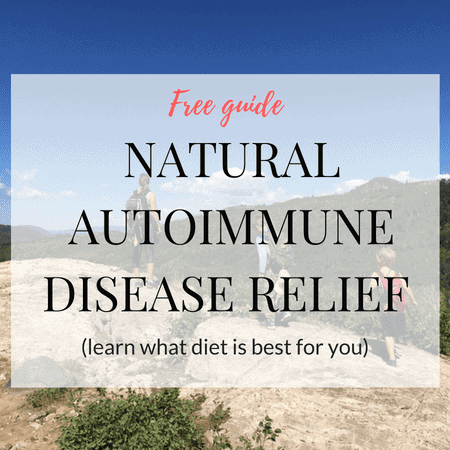
How do you Start AIP?
To see all of my own prep work before this particular time I'm doing AIP, read through my post on AIP Batch Cooking and Prep and watch the videos. I also recommend checking my post – The Ultimate Guide to the AIP Diet – to learn all the specific details.
Next post in this series: Why I'm Doing AIP and What I ate Days 2-4
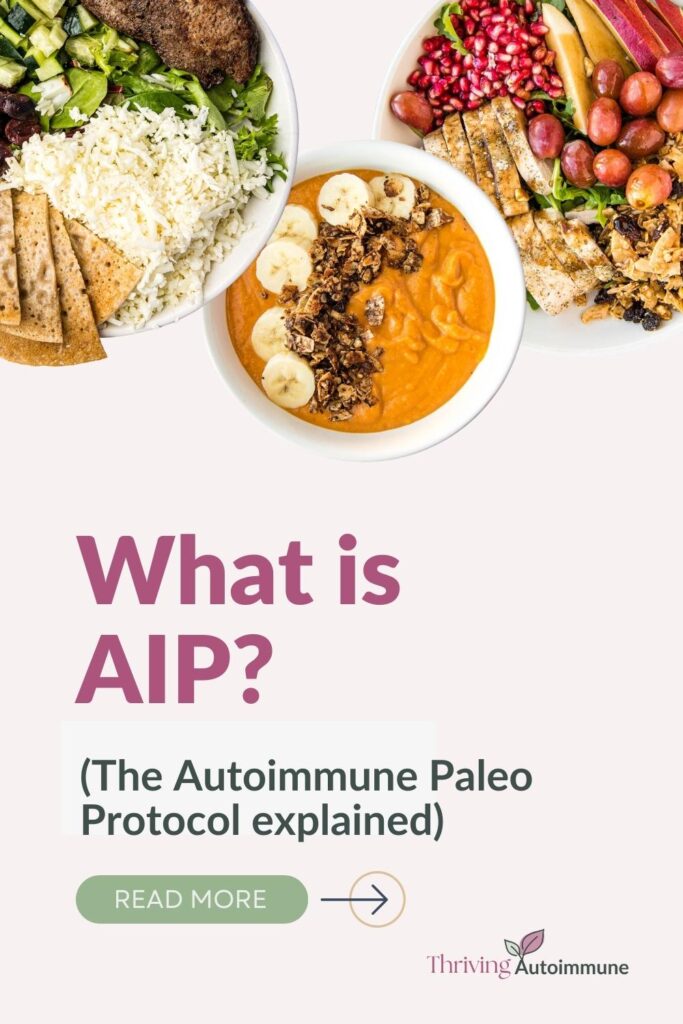
Make Paleo easier, faster, less expensive, and way more fun with all the resources in my Freebie Library! Click on the picture to find out how to access it.
